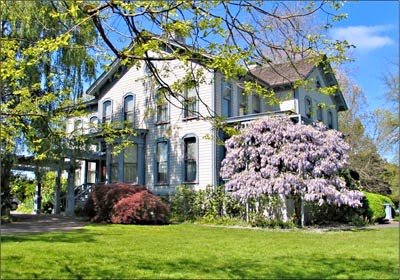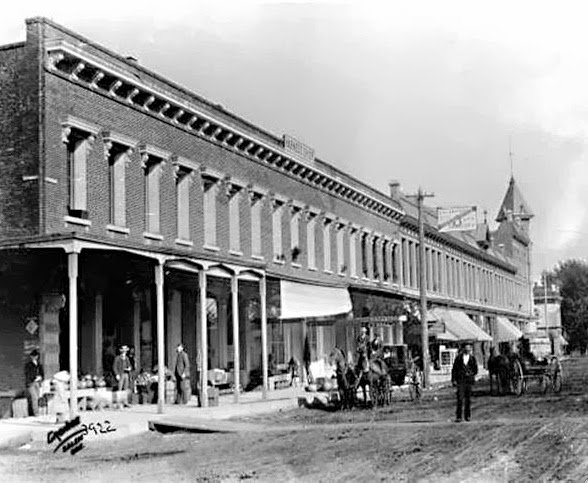- On January 1, Queen Victoria is proclaimed Empress of India. Charles George Gordon (“Chinese Gordon”), much respected British diplomat and general, becomes General-General in Anglo-Egyptian Sudan.
- The US presidenti
al election is finally decided in favor of Republican Hayes after a compromise. Southern Democrats benefit by federal troops leaving former the former Confederate states. - In January, at the Battle of Wolf Mountain, Chief Crazy Horse and his warriors fight their last battle with U.S. Cavalry. In May, realizing his people are weakened by cold and hunger, Crazy Horse surrenders. In August, near Big Hole River, Montana, a small band of Nez Perce are defeated in a clash with U. S. Army.
- Cornelius Vanderbilt, the wealthy shipping and railroad magnate, who founded the modern corporation, dies. In 1873, to compensate for his support of the Union in the Civil War (and please his second wife, a native of Mobile, Alabama), he founded Vanderbilt University in Nashville, Tennessee. (The First Tycoon, T. J. Styles, 2009)
- In November, Edison demonstrates his phonograph ~ considered his first great invention.
- Popular dime-novel: Deadwood Dick by Edwin Wheeler. New Books: The American, Henry James Black Beauty, Anna Sewell.
In Salem
Asahel Bush begins building his new residence to replace their home of 17 years. That house had belonged to the Leslie family and was a part of the land assigned to David Leslie in 1843 when the Methodist Mission was discontinued. Mr. Bush purchased the house and the 100-acre property in 1860. The new Italianate structure, completed the next year, was designed by Wilbur F. Boothby. It would be home to the Bush family for the next 75 years. It was part of a farm complex which included a barn, greenhouse
Asahel Bush died in 1913, but his daughter, “Miss Sally” continued living there and brought her sister Eugenia home for the last years 20 years of her life. After Miss Sally died in 1946, her brother A.N. Bush returned to the house in 1948 when his Capitol Street home was demolished for the construction Oregon Highway Building (now the Public Service Building) of the North Capitol Mall. The family had sold the property before his death in 1953 at the age of 93. The sale to the city specified Bush’s Pasture Park be named in honor of the father and be restricted to park and playground use. There was no provision for preserving the buildings, but they have since been occupied by the Salem Art Association and maintained by the city.
When you visit
The Bush House Museum, operated by the Salem Art Associatio
Other Events
- T.M Gatch is mayor 1877-8.
- Rachel Belden Brooks, an African-American who lived in Waldo Hills with the Delaney family in 1844, is found on the 1877 tax records with 144 homestead acres on the west side of Willamette River. “Aunt Rachel” was a familiar Salem figure, well remembered after her death in 1910. She is buried in the Delaney plot in Pioneer cemetery.
- The elegant, Italianate-styled England Block is constructed downtown at 216-20 Commercial Street NE. Like many other downtown buildings, this has been significantly altered through the years, especially in the 1950s, and no longer contributes to the architecture of the historic district. The 1886 photograph above shows the original, dignified appearance of the building as it blended with the others stretching between Court and Chemeketa Streets. At about the time of the photograph, William England’s commercial property was sold to R. M. Wade, another merchant of agricultural and household equipment on Commercial Street. Mr. England was a pioneer Salem wagon maker and successful banker, but a business failure and death of his young son contributed to his own loss of health as recalled in his 1901 obituary. The family’s Victorian home was a block north at 340 Liberty N. It was demolished in 1951.
- Elijah Colbath builds a residence near what is now 334 Wyatt Court. Gabriella, his wife, was the original owner of the house as was the common practice of the day: putting property in a wife’s name as it was the only investment she could claim free of debt after the husband’s death. Elijah came to Salem as a ship’s carpenter, went into the lumber business and was a building contractor. He also served with the Capital City Volunteer Fire Company. The family owned the property until the 1920s. The next owner, Homer Wyatt, divided the property and moved the house about 100 feet to the present location. It is a Local Landmark in the NEN neighborhood.
- State Fair goers are treated to their first, amazed glimpses of inventions that would soon be commonplace: Thomas Edison’s gramophone and Alexander Graham Bell’s telephone.
- An 1880s photograph shows an industry created in 1877, the White Mill on North Front Street, using the water power of Mill Creek as it falls into the Willamette River. It appears to have been on the south side of the creek, probably on the riverfront where the bridge now crosses Front Street.


